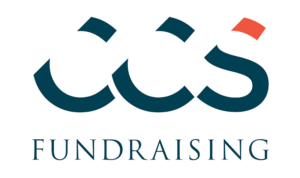When you hear the term “Donor-Advised Fund” what is the first word that comes to mind? For me, it’s opportunity.
A donor-advised fund (DAF) is a philanthropic giving vehicle established at a public charity. Donors can establish and fund a DAF account by making irrevocable, tax-deductible contributions to the charitable sponsor. Then, they can recommend grants from the DAF to other nonprofit organizations.[1]
Earlier this month, National Philanthropic Trust (NPT), the largest national, independent public charity that manages donor-advised funds, and one of the leading grantmaking institutions in the U.S., published its 2020 Donor-Advised Fund Report and the findings are making headlines.[2]
The Tremendous Historical Growth of DAFs
Based on an analysis of 2015 through 2019 fiscal year data from nearly 1,000 charities that are DAF sponsors—meaning they administer donor-advised funds—NPT reports historical growth in DAFs:
- Grantmaking from DAFs to qualified charities totaled a record-breaking $27.37 billion in 2019, a whopping 93% increase since 2015, when grantmaking totaled $14.15 billion.
- At the same time, contributions to DAFs also skyrocketed, totaling $38.81 billion in 2019 and representing an 80% increase since 2015 when contributions totaled $21.48 billion.
- Charitable assets under management in DAFs totaled $141.95 billion in 2019. This represents a compound annual growth rate of approximately 10% since 2015—a reflection of an increasing number of DAFs, donor contributions, and market gains.
- The number of individual DAF accounts jumped to 873,228, up from just 272,781 in 2015 and representing an astounding 220% increase.
DAFs and the Philanthropic Response to COVID-19
In addition to its annual Donor-Advised Fund Report, NPT also published a special Donor-Advised Fund COVID Grantmaking Survey.[3] The survey reflects self-reported data from DAF sponsors on the philanthropic response to COVID-19 as it emerged in the first half of 2020.
Amidst a global pandemic, a widespread reckoning with racial injustice, and a polarized political environment, grantmaking from DAFs to qualified charities rose nearly 30%, from $6.41 billion in the first six months of 2019 to $8.32 billion for the same period in 2020. The total number of DAF grants increased by 37%, from 945,044 grants in the first half of 2019 to 1,298,787 in the same period in 2020.
All eyes were on DAFs at the start of 2020 following the launch of #HalfMyDAF by philanthropists Jennifer and David Risher.[4] Through a matching challenge incentive, #HalfMyDAF seeks to raise awareness of DAFs and inspire DAF donors to give now. The movement leveraged $8.6 million in charitable grants from DAFs to nonprofit organizations in just five months, aided by $1.4 million in matching funds.
On February 1, 2021, #HalfMyDAF reignited the movement with an ambitious goal of leveraging $20 million in DAF grants to nonprofits this year, including $3.1 million in matching funds.
This creative fundraising strategy educated and inspired individuals to give through DAFs while empowering nonprofits with the knowledge and tools to encourage DAF donors to act now.
As we look to the future of philanthropy, we know one thing for sure: DAFs will be an integral part of the conversation. NPT’s findings and the #HalfMyDAF challenge reinforce the impact of DAFs and DAF donors on charitable organizations, especially in times of uncertainty.
How to Attract Gifts from DAFs at Your Organization
How can we apply these findings to position nonprofit leaders with the language and resources to leverage DAFs in support of their annual fundraising efforts?
Below are three recommendations to elevate philanthropy through DAFs. These recommendations are aimed at preparing fundraisers with the tools to maximize philanthropic revenue as we continue to navigate an evolving environment.
1. Make giving through DAFs a part of your donor dialogue.
The more we talk about DAFs, the more they will become a part of our fundraising lexicon, and the more that donors will make them a part of their giving toolkit. Take the time to educate donors on the role and benefits of a DAF. When meeting with a donor, don’t be afraid to spark the conversation: “Many of our supporters give through a DAF. Would you be open to learning how you can leverage a DAF to have a greater impact on our community?”
2. Make it easy to give to your organization through a DAF.
When a donor goes to your website, it should be clear that your organization welcomes giving through DAFs. Market DAFs on your website by including a link to “give from my DAF” or “click here” if visitors have a DAF and want to learn more about giving through this vehicle to your organization.
Additional ways to attract gifts from DAFs include direct mail appeals and employer matching gift programs. Let donors know that your organization is eligible for support from DAFs when communicating with donors— “send a check or recommend a grant from your DAF” or “double the impact of a DAF grant through your employer’s matching gift program” are ways to convey this important message.
3. Show the impact that DAF grants will have today.
Share examples of how DAF grants have enabled your organization to have a greater impact on the communities you serve. Create a sense of urgency by emphasizing how grants made today have equipped your organization with the tools, talent, and technology to achieve your mission while navigating an uncertain environment. Use personal stories of DAF donors to educate and inspire a new cadre of individuals to leverage DAFs as part of their philanthropic toolkit.
As DAFs become more popular, and technology makes giving to and from DAFs more accessible, we can expect to see grantmaking from DAFs to charitable organizations continue to grow at a steady rate. The future is #DAF—let’s get ready.
References:
[1] National Philanthropic Trust, What Is A Donor-Advised Fund?
[2] National Philanthropic Trust, The 2020 DAF Report, February 2021.
[3] National Philanthropic Trust, Donor-Advised Fund COVID Grantmaking Survey, February 2021.
